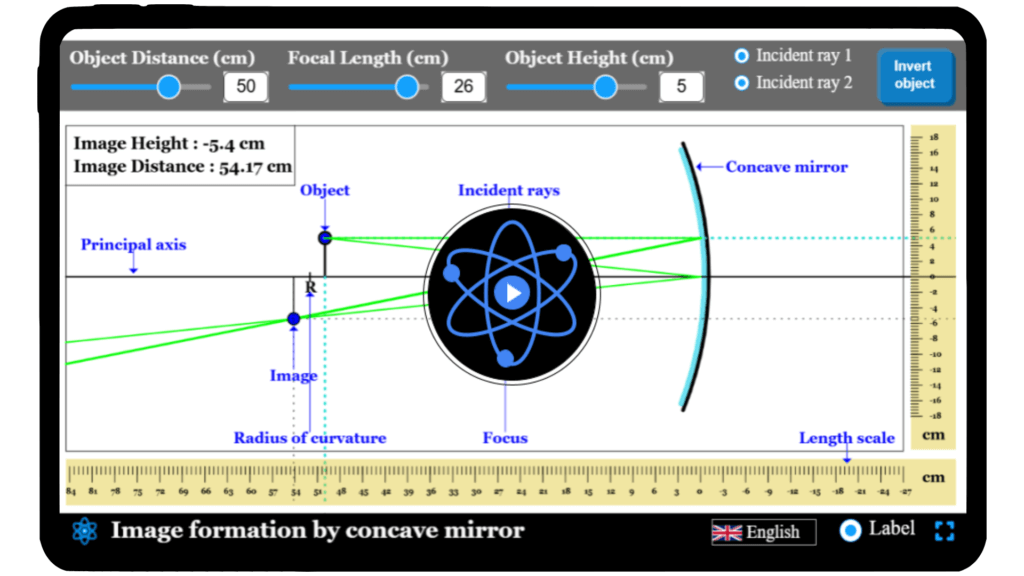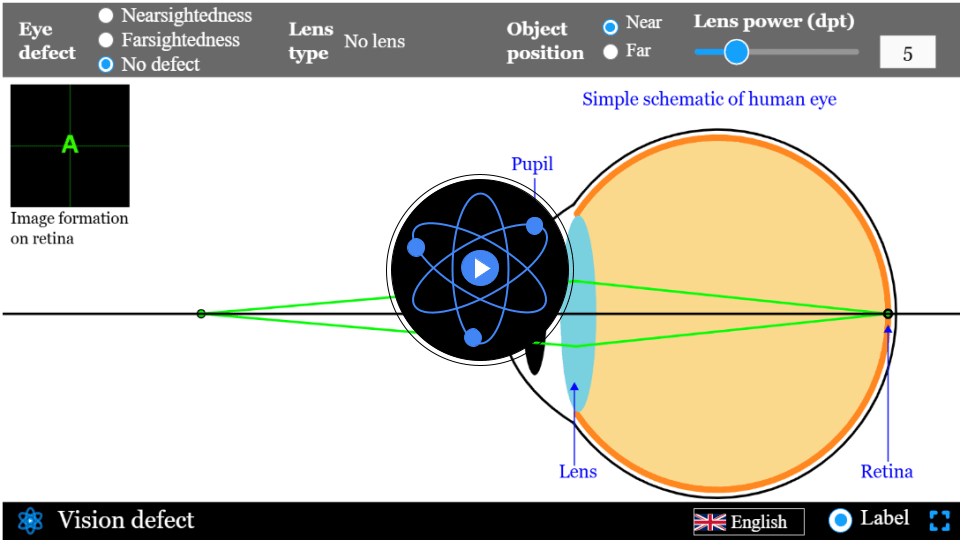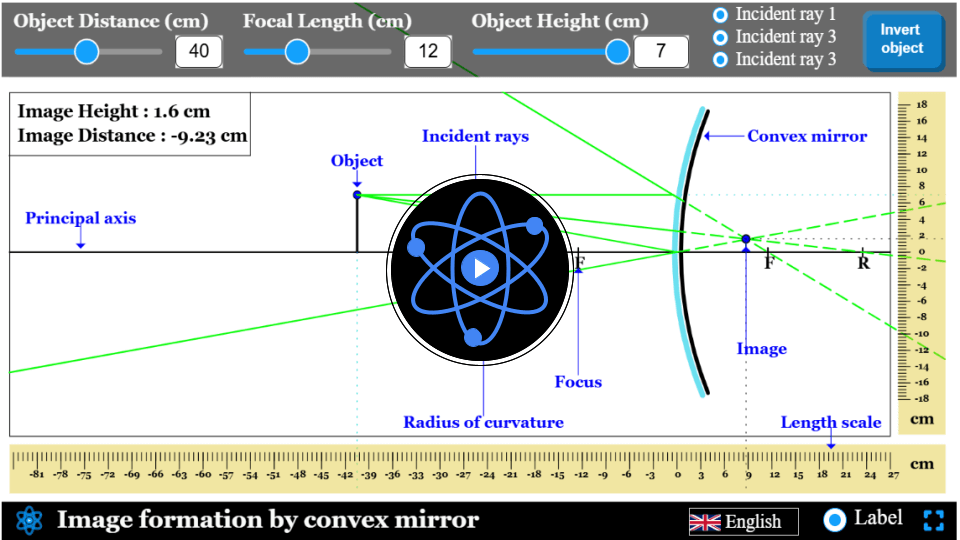Concave mirror simulator
Explore how concave mirror form images and experiment with different configurations to see their effects using our interactive simulator.
Concave mirror
Concave mirrors, with their inward-curved reflective surfaces, are pivotal in applications ranging from telescopes to shaving mirrors. From focusing light to a single point to producing magnified images, these mirrors can do anything. Want to see how the achieve this sorcery?
Then dive into the fascinating world of concave mirrors with our interactive simulator. Unleash your curiosity and explore how concave mirrors manipulate light to form stunning images. Start your journey below and transform your understanding of optics!
$$ \frac{1}{f} = \frac{1}{v} + \frac{1}{u} $$
Mathematical description
Mirror formula relates the object distance, image distance, and focal length of a mirror.
where:
- \( f \) is the focal length of the mirror
- \( u \) is the object distance
- \( v \) is the image distance
Tutorial video
Take a quick spin through our simulator!
FAQs on Concave Mirror
Qus 1. What is a concave mirror?
A concave mirror is a spherical mirror with an inward-curved reflective surface. It converges light rays to a focal point, forming real or virtual images, depending on the object’s distance from the mirror.
Qus 2. How does a concave mirror form an image?
A concave mirror forms images by reflecting light rays that converge at a focal point. The image’s nature (real or virtual, magnified or diminished) depends on the object’s distance from the mirror relative to the focal length.
Qus 3. What is the principal focus of a concave mirror? How to find the focal length of a concave mirror?
- The principal focus of a concave mirror is the point where parallel light rays converge after reflection. It is located along the mirror’s principal axis at a distance equal to half the radius of curvature.
- The focal length of a concave mirror can be found using the mirror formula. In the formula below, ‘f’
$$ \frac{1}{f} = \frac{1}{v} + \frac{1}{u} $$
Qus 4. What are the uses of a concave mirror?
Concave mirrors are used in telescopes, headlights, shaving mirrors, and solar furnaces. They focus light to a single point, making them ideal for applications requiring concentrated light or magnified reflections.
- Use in telescopes: Concave mirrors gather and focus light from distant objects. This focusing ability allows telescopes to produce clear, magnified images of stars, planets, and other celestial bodies.
- Use in headlights : In headlights, concave mirrors focus and direct light into a concentrated beam, enhancing visibility. They reflect light from the bulb into parallel rays, projecting a powerful and focused light beam on the road.
- Use in Solar furnaces: Concave mirrors in solar furnaces focus sunlight into a single, intense point, generating high temperatures. This concentration of light enhances the efficiency of solar energy conversion and heating processes.
- In shaving/makeup mirrors: concave mirrors are often used in makeup/shaving mirrors because they magnify the reflection, allowing for detailed and precise application. They provide a closer and clearer view of the face.
Qus 5. What is the difference between real and virtual images in a concave mirror?
Real images formed by concave mirrors are inverted and can be projected onto a screen, while virtual images are upright and cannot be projected. The nature of the image depends on the object’s distance from the mirror.
When the object is beyond the focal range of the concave mirror, then image formed is real, diminished and inverted.
When the object is placed within the focal range of the concave mirror, then the image formed is virtual, magnified and upright.
Qus 6. How do you calculate magnification in a concave mirror?
Magnification in a concave mirror is calculated using the formula
$$ M = \frac{Hi}{Ho} =- \frac{v}{u} $$
where ‘M’ is the magnification, ‘Hi’ is the image height, ‘Ho’ is the object height, ‘v’ is the image distance and ‘u’ is the object distance,
Qus 7. What is the difference between concave and convex mirrors?
Concave mirrors converge light to a focal point and can produce real or virtual images, whereas convex mirrors diverge light, forming only virtual images. Concave mirrors magnify, while convex mirrors provide a wider field of view.
Qus 8. What are the ray-tracing rules for spherical mirrors like concave mirror?
- A ray that is travelling parallel to the central axis of the concave mirror reflects back through the focal point.
- A ray that appears to pass through the focal point of concave mirror, reflects back parallel to the central axis of the concave mirror.
- A ray that appears to pass through the centre of curvature of the concave mirror is reflected back upon itself.
- A ray that strikes the intersection of the mirror and central axis of the concave mirror is reflected symmetrically about the central axis





why is chile building 40 odd m mirror telescope why not build lens telescope?
Hi Aparna,
The choice of mirrors over lenses is mainly driven by feasibility and practicality:
As for why Chile was chosen:
Exceptional Skies: Clear, dry, and stable atmosphere.
High Altitude (~3000 m): Minimizes atmospheric distortion.
Global Hub: That’s why leading observatories—ELT, GMT, VLT, and ALMA—are all located there.